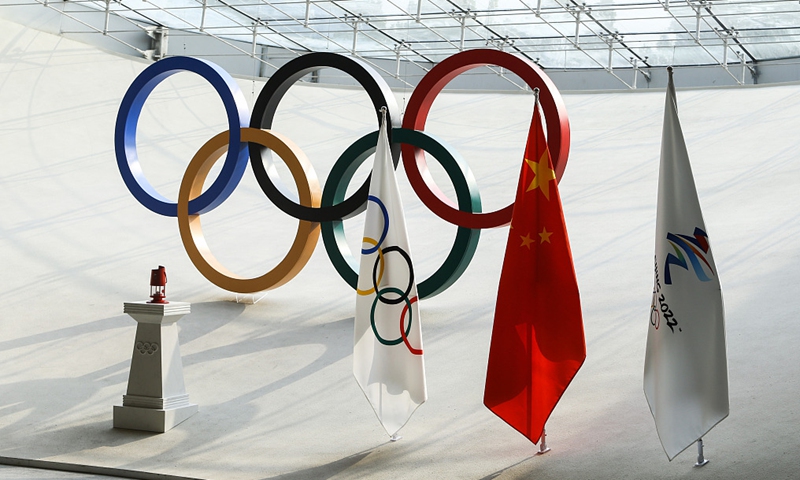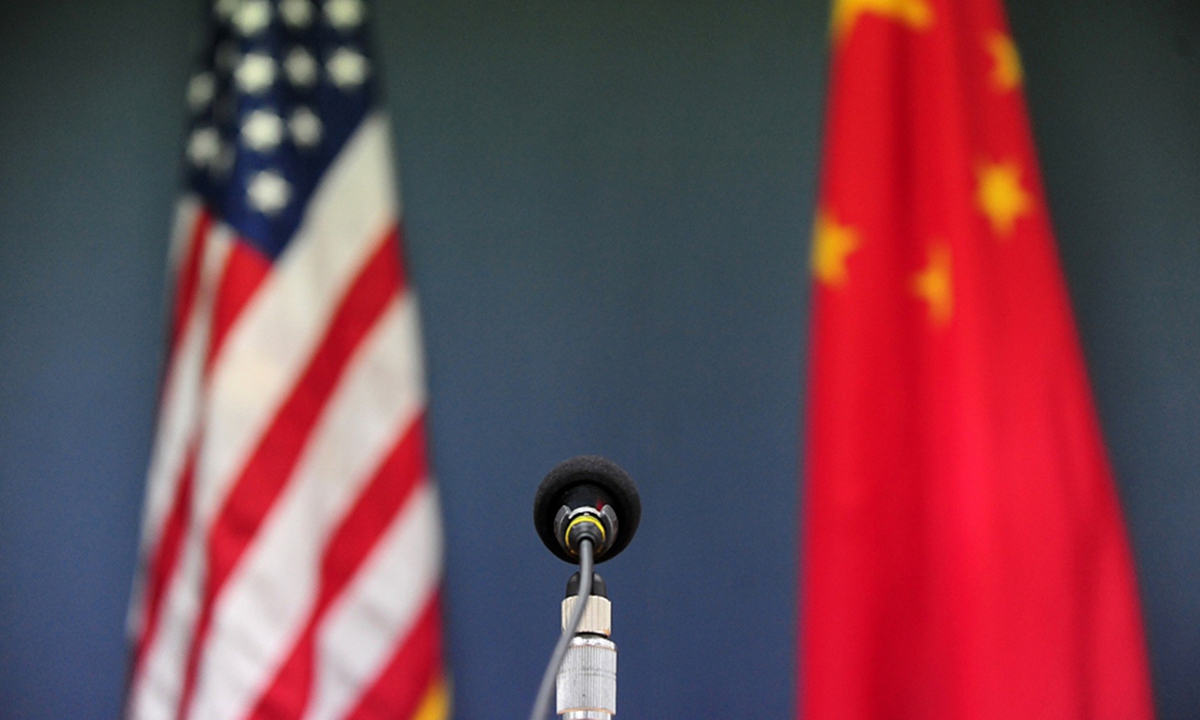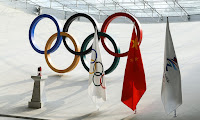Share This
Sunday, December 19, 2021
Beijing Winter Olympics 2022
 Rightways - Sowing the seeds of Success:
Think Global, Act Local; Change & Grow Rich; Sow as You Reap & Soar High!
Richard Tan
MBA(UK), BCA(NZ), AMA(USA),MMIM
Rightways - Sowing the seeds of Success:
Think Global, Act Local; Change & Grow Rich; Sow as You Reap & Soar High!
Richard Tan
MBA(UK), BCA(NZ), AMA(USA),MMIM
We need a global summit on inequality
INCOME and wealth inequality is unjust, and yet the world continues to tolerate rising injustices, the most recent being inequalities in vaccine distribution.
French political economist Thomas Piketty and his colleagues at the World Inequality Lab has just published the World Inequality Report 2022, a real goldmine for data and insights on global inequalities.
I found at least three nuggets inside that are blindingly obvious, but no one has quite tied it together so well as Piketty and his team.
First, inequality is primarily a political issue. We can all do something about it, but since politics has been captured by money, the few remain more equal than the many.
Between 1995 and 2021, the top 1% wealthiest people in the world captured 38% of the growth in global wealth, whereas the bottom 50% had a pitiful 2% share.
Similarly, the richest 10% of world population take home 52% of global income, whereas the bottom 50% earned only 8.5%.
The report showed why these inequities could not be reduced despite increases in average income and wealth per capita.
The progressive tax rates where the rich paid more than the poor, introduced in the first half of the 20th century to deal with inequality, were dismantled in the 1980s.
The neoliberal free market philosophy preached low taxes and small governments to encourage entrepreneurship, but effectively handed more income and wealth to the elite few.
Piketty’s second historical insight is that Europe and later America got rich on the back of both the Industrial Revolution and colonisation.
In 1820, between country (inter-country) inequality was only 11% of global inequality meaning that most inequality was domestic (intra-country).
But inter-country inequality rose when the West advanced with industrialisation and resource extraction from the colonies.
That peaked in 1980 when it represented 57% of global inequality.
Since then, the rise in income of China, India and other newly independent countries narrowed the gap with the West, but by 2020, domestic inequality again accounted for 68% of global inequality.
This meant that the developing countries allowed their own inequalities to worsen, even as they were narrowing the gap with the West.
In short, the rich are the same everywhere. They have more and want more.
But there is a twist to this story.
One reason why the Rest has caught up with the West is that “nations became richer, but governments have become poor.”
In essence, because the Europe, north America and Japan governments used debt to tackle slow growth since the 1980s, private wealth grew at the expense of public wealth.
Privatisation policies transferred public wealth such as utilities to the private sector, whereas public sector debt continued to increase.
The UK and US public wealth which was around 15% to 30% of total wealth before the 1980s declined to net liabilities of minus 10% to minus 20% of total wealth respectively.
Contrast this with China and Russia, where public wealth represents around 30% of national wealth, down from 70% at the end of the 1980s.
The third report insight is that inequalities and climate change are highly co-related.
Between 1850 and 2020, half (49%) of historical carbon emission was accounted by north America (27%) and Europe (22%),
China accounted for 11%, but has become the largest emitter, although per capita emission remains lower.
A recent International Monetary Fund study pointed out that “the richest countries represent only 16% of the world population but almost 40% of CO2 emissions.
The two categories of the poorest countries in the World Bank classification account for nearly 60% of the world’s population, but for less than 15% of emissions.”
The COP26 debate was all about whether China, India and other emerging markets that are increasing their carbon emissions should do more on net-zero pledges.
The entanglement between CO2 emission and income and wealth levels suggests that climate warming policies should focus more on making those responsible for carbon emissions pay more for remedial climate action.
The bottom 50% of population in Europe emits around five tonnes of carbon per person per year, with their counterpart emitting three tonnes in east Asia and 10 tonnes in north America.
But the top 10% in these regions account for 29 tonnes in Europe, 39 tonnes in Asia and 73 tonnes in North America.
Indeed, the top 1% in the United States account for 269 tonnes of carbon per person per year, compared with 139 tonnes for the top 1% in China.
The rich everywhere are the biggest carbon emitters.
This suggests that tackling climate change and social injustice are part of a total political package, cutting across nations.
It’s one thing to promise to cut carbon to net zero, it’s another to design the projects and programmes to deliver on their promises. Back home, each government will face huge resistance from vested interests that want to delay or just green-wash any action. In other words, talk more and do less.
The report has made some excellent suggestions to tackle inequality, such as progressive tax measures and a global asset register, that are bound to be controversial. But to be effective, they need global cooperation.
No single country can impose higher tax rates or tougher action without being undercut by another country.
Since everything is politics, I have to agree with inequality blogger Branko Milanovic that the recent Summit on Democracies is the wrong idea for the world, because it tried to divide the world into two opposing ideological camps.
The priority should be to work together globally to tackle climate and human inequalities that require domestic action against vested interests that are common across nations.
The next global summit should be about how to tackle inequalities.
Given such complex issues and facts raised by the Piketty and his colleagues, the least we can do is to have a democratic, transparent and constructive dialogue on how those who can afford and emit more carbon should pay more taxes to foster a more sustainable and inclusive world.
Andrew Sheng writes on global issues from an Asian perspective. The views expressed here are the writer’s own.
Related posts
US Democracy Summit: An undemocratic ‘summit for democracy
Moral vacuum at the heart of modernity, now embodied in US laws!

China releases report exposing malaises of US democracy, timely and to the point: experts

Western media bias against China deplorable, dangerous; Anti-China RSF has more actors than audience in its play against China

 Rightways - Sowing the seeds of Success:
Think Global, Act Local; Change & Grow Rich; Sow as You Reap & Soar High!
Richard Tan
MBA(UK), BCA(NZ), AMA(USA),MMIM
Rightways - Sowing the seeds of Success:
Think Global, Act Local; Change & Grow Rich; Sow as You Reap & Soar High!
Richard Tan
MBA(UK), BCA(NZ), AMA(USA),MMIM
Friday, December 17, 2021
Covid-19: Sinovac recipients, those above 60 must get booster shots by February or have their status changed to 'incomplete', says KJ
KUALA LUMPUR: If you don't get your Covid-19 booster shot by February next year, your vaccination status may be deemed "incomplete", says Khairy Jamaluddin.
The Health Minister said the groups affected by this are those who received the Sinovac vaccine, as well as anyone who is above 60 years old.
"If these groups of individuals still have not gotten their booster shots after February 2022, their vaccination status will be changed to 'incomplete'," he said in a statement on Wednesday (Dec 16).
He said those whose status has been changed to "incomplete" would not be able to enjoy the benefits of those who have been deemed to have completed their vaccinations.
He said individuals who must get their booster shots before the end of February next year are those who had taken the Sinovac vaccine.
He added that those above 60 years old, who had taken a vaccine irrespective of the type of vaccines, will also be required to take their booster shot.
Khairy said this was in line with a recommendation by the World Health Organisation's Group of Experts on Immunisation (SAGE) advice.
He noted that the Covid-19 Immunisation Task Force — Booster (CITF-B) had approved and adopted the recommendation on Dec 8.
At present, Khairy said that Comirnaty by Pfizer-BioNTech, CoronaVac by Sinovac and AstraZeneca have been approved for use for booster shots.
The Working Technical Committee, he added, had recommended that those above 18 should get their booster shots.
No benefits without booster

KUALA LUMPUR: The vaccination status of those required to get their Covid-19 booster shot will be deemed “incomplete” if they fail to get their shots by February next year, says Khairy Jamaluddin.
“If these group of individuals still have not got their booster shots after February 2022, their vaccination status will be changed to ‘incomplete’,” the Health Minister told a press conference in Parliament yesterday.
He said those whose status has been changed to “incomplete” would not be able to enjoy the benefits of those who are deemed to have completed their vaccination.
Sinovac vaccine recipients are among those who must get booster shots by the February deadline.
Meanwhile, those above 60 years old, irrespective of vaccines type, will also be required to get their booster shot.
Khairy said this was in line with recommendation by the World Health Organisation’s Strategic Advisory Group of Experts (SAGE).
He added that the Covid-19 Immunisation Booster Task Force had approved and adopted the recommendation on Dec 8.
At present, Khairy said that the vaccines by Pfizer-BioNTech, Sinovac and AstraZeneca have been approved for use as booster shots.
He added those above 18 should also get their booster shots.
Booster dosing started nationwide on Oct 13 for fully vaccinated individuals to ensure the immunity received after completing their doses can be maintained for an optimal period, especially against the Delta variant.
Last month, Khairy stressed that Malaysia could face a new wave of Covid-19 infections if the administration of booster doses was not accelerated.
In a tweet later yesterday, he said in line with the government’s effort to ramp up the booster shots vaccination drive, mega PPV (vaccination centres) will be reopened starting with the Klang Valley.
“All 60 and above or Sinovac recipients must get a booster latest by February 2022 to keep (their) fully vaccinated status.
“You will get your booster appointment on MySejahtera 180 days after the second dose (Pfizer or AstraZeneca) or 90 days after the second dose (Sinovac).
“You can also contact GPs near you at https://vaksincovid.protecthealth.com.my/find to register on the waiting list,” he said.
Related stories:
Covid-19: Don't wait, take the booster shot, says Khairy
Mandatory jabs - PressReader
[Malaysia] No benefits without booster - Nation Thailand
Mysejahtera - Malaysiakini
No big Xmas, New Year's Eve gatherings, says Khairy
Related posts
Booster shots vital in reducing Covid-19 infectivity rate
 Rightways - Sowing the seeds of Success:
Think Global, Act Local; Change & Grow Rich; Sow as You Reap & Soar High!
Richard Tan
MBA(UK), BCA(NZ), AMA(USA),MMIM
Rightways - Sowing the seeds of Success:
Think Global, Act Local; Change & Grow Rich; Sow as You Reap & Soar High!
Richard Tan
MBA(UK), BCA(NZ), AMA(USA),MMIM
Thursday, December 16, 2021
Chinese nation's major achievements listed in global top 10 engineering feats
China has four major feats listed among this year's Global Top Ten Engineering Achievements, according to the journal Engineering, one of China's most prestigious scientific publications.
Experts said China will continue to be an active contributor to global engineering frontiers and make more breakthroughs in solving major engineering obstacles that are key for the sustainability and wellbeing of mankind.
The four projects spearheaded by Chinese engineers are the Five-hundred-meter Aperture Spherical Telescope, hybrid rice, the Three Gorges Hydroelectric Power Station and the ultra-high voltage transmission project.
The telescope, located in southwestern China, became operational last year and is currently the world's largest and most sensitive single dish radio telescope. The entire Three Gorges project was completed last year after more than two decades of construction. It is the world's largest multipurpose hydraulic complex.
The third generation of hybrid rice created by Chinese scientists set a new annual yield record of 22.9 metric tons per hectare last year. In 2019, China launched the world's first 1,100-kilovolt ultra-high voltage direct current transmission network, making efficient, large-scale allocation of electricity across China possible.
The other achievements included AlphaGo and AlphaFold, which are artificial intelligence programs designed for specific tasks such as playing chess and predicting protein structure, and the development and use of the CRISPR/Cas9 gene-editing technique.
Extreme ultraviolet lithography systems for high-end chipmaking, 5G mobile communication technology, NASA's InSight Mars Lander, public health epidemic prevention and the battle against COVID-19 also made the list.
The achievements on the list are major engineering projects or breakthroughs with global influence that have been completed in the past five years, the journal said. They represent the highest level of engineering science and technology in their respective fields.
The journal Engineering is a publication of the Chinese Academy of Engineering. The list's creation involved nominations and recommendations by engineers and technicians around the globe, numerous public surveys and final screening by the selection committee.
On Tuesday, the academy's Center for Strategic Studies and global analytical firm Clarivate published their Engineering Fronts 2021 report. The document, published annually since 2017, selected a total of 186 research and development frontier topics for nine broad engineering categories, ranging from agriculture to engineering management.
Zhong Zhihua, vice-president of the CAE, said engineering and technology is a major support for socioeconomic growth and mankind's pursuit of sustainable development.
"As our country enters a new developmental phase, we urgently need to accelerate our pace of innovation in engineering and technology and improve the quality of our innovation," he said, adding this will require scientific insight on new emerging engineering frontiers to guide future development.
Jeremy Lawson, senior vice-president of Clarivate, said all these fronts are essential to global social and economic development, and China is also at the forefront of many of these subjects.
Strategic collaboration with key global research organizations such as the CAE is central to advancing global scientific research and driving sustainable development, he added.
Yang Baofeng, an academician at the CAE, said the report tracks frontier engineering research that may yield new breakthroughs and innovations, and allow scientists, industries and policymakers to identify the latest engineering trends and adjust research and policy priorities accordingly.
Yang said this year's engineering frontiers had three main focuses: interdisciplinary research, the use of artificial intelligence in various engineering and industrial fields, and tackling major common issues such as the COVID-19 pandemic and climate change.
China credited with 4 of top 10 global engineering feats
A panoramic view of the Five-hundred-meter Aperture Spherical radio Telescope (FAST) in Pingtang, Guizhou Province. It is nicknamed Tianyan, or the Eye of Heaven, by amateur astronomers.(Photo: China Daily)
China has four major engineering feats listed among this year's Global Top Ten Engineering Achievements, according to the journal Engineering, one of China's most prestigious scientific publications.
The four projects are the Five-hundred-meter Aperture Spherical Radio Telescope; hybrid rice; the Three Gorges Hydroelectric Power Station; and the ultrahigh voltage transmission project.
The other six engineering achievements on the list were realized by other countries: AlphaGo, a computer program that plays the board game Go; AlphaFold, an artificial intelligence program the predicts protein structure; the development and application of the CRISPR/Cas9 Gene editing technique; extreme ultraviolet lithography systems; 5G mobile communication technology; and public health epidemic prevention and control measures to combat COVID-19.
The achievements are major engineering projects or breakthroughs with global influence that have been completed in the past five years and have proved their worth, the journal said. They represent the highest level of engineering science and technology in their respective fields.
These achievements have integrated a wide range of technological systems and resources, made distinct contributions in the engineering principles of safety, precision and sustainability, and promoted industrial and socioeconomic growth for the betterment of humanity.
The journal Engineering is published by the Chinese Academy of Engineering. The list was created by a global panel of engineers and technicians. The process consisted of an international call for nominations and recommendations, public surveys and final screenings by a selection committee.
The journal plans to organize the selection of Global Top Ten Engineering Achievements annually and publish the list worldwide.
Related news
Using the Five-hundred-meter Aperture Spherical Radio Telescope (#FAST), also dubbed as the "China Sky Eye," scientists have obtained accurate magnetic field strength in molecular cloud, a region of the interstellar medium that seems ready to form stars.
Four feats in global top 10 list | The Star
Three Gorges Corp reaches power milestone
Hengnan hybrid double-crop rice sets national record
Related posts:
Flight plan: a pilot testing a passenger drone in the southern city of Guangzhou. china daily/ANN JUST how close are we to having flyin.
 Rightways - Sowing the seeds of Success:
Think Global, Act Local; Change & Grow Rich; Sow as You Reap & Soar High!
Richard Tan
MBA(UK), BCA(NZ), AMA(USA),MMIM
Rightways - Sowing the seeds of Success:
Think Global, Act Local; Change & Grow Rich; Sow as You Reap & Soar High!
Richard Tan
MBA(UK), BCA(NZ), AMA(USA),MMIM
Wednesday, December 15, 2021
Off to a flying start in new area: China set to lead the global charge in flying tax
Flight plan: a pilot testing a passenger drone in the southern city of Guangzhou. china daily/ANN
JUST how close are we to having flying taxis? In China, there is a rush of homegrown talent and international companies that recognise the value of China’s markets being ever-receptive to novelty.
Despite the technical hurdles faced, the speed at which entrepreneurs are moving makes the time frame for a viable service coming to Chinese cities a matter of years, not decades.
Over the last half decade, China has come to dominate aerial technologies. The global drone success story speaks for itself, with companies such as DJI and Autel Robotics commanding dominant market shares and supplying the majority of flying products to both professionals and enthusiasts worldwide.
Likewise, China-based flying taxi companies, such as Ehang, are advancing fast, carrying out multiple test flights with live passengers and employees, with promising results.
The company even has its eyes set on expansion once the technology is established, with Japan as a potential market, and also a venture into the delivery sector, which could start as early as 2023.
China’s reputation as a fast adopter of disruptive technologies is a major incentive behind the growth of flying taxi research in the country.
Reservations about getting in a new autonomous air vehicle and flying hundreds of metres in the sky may make less adventurous consumers elsewhere stick to their cars for a while.
German company Volocopter has this year created a craft that can take off and land safely within controlled conditions, also with the aim of launching an air ride service in China.
In a statement, Florian Reuter, the CEO of Volcopter, said: “China is the single biggest market opportunity for the urban air mobility industry.”
China has a history of taking up new technology quickly. Those invested in the future of affordable electric air mobility industries in China will certainly hope that they will follow the likes of smartphone cashless payments, and hail and ride (terrestrial) apps.
Both leapfrogged more dated practices in other parts of the world, such as “chip and pin” payments in Europe and the United States, and were adopted with a huge level of success across China’s huge economically active population.
Regional authorities across China are gearing up to facilitate flying taxi services.
Hunan, Anhui and Jiangxi provinces are all supporting the concept of low altitude aviation, investing heavily in airport construction, landing fields and tourism sectors, which will no doubt be boosted by the increase in transport efficiency.
The high expectations for what is coming put pressure on engineers to deliver designs that are practical for mainstream adoption. Noise levels are a major concern, as flying taxis will operate at a much lower altitude than traditional jet airplanes, which frequently cause residential disturbances at heights 10 or 20 times higher. The fact that these taxis are universally electric in design is a major bonus, offering low noise levels, meaning that they should be inaudible around 100m above street level.
Operating on exchangeable batteries also provides environmental benefits, making replacement of parts straightforward, saving on material resources and emissions. Many models are fuelled by several different batteries at once, providing safety fail-safes, meaning that if one or indeed several rotors fail, the aircraft can still land safely.
China is leading the charge; however, the Netherlands, Qatar and New Zealand are also currently carrying out flying taxi trials.
This cannot come soon enough. In cities around the world, ground transportation infrastructure is creaking, and each week, hours of productivity are wasted by commuters being stuck in congested, polluting traffic.
Over the next five years, these trials will morph into services open to the public, and as prices drop, accessibility will no doubt increase. Getting passengers to be comfortable with flying taxis in their cities and their autonomous pilot systems, however, will be a different task, that may take more time and proof of safe practice.
If any market will welcome it first, though, it will be in China.
— china daily/ANN
Related posts:
China in top spot for research amid US struggling to ‘contain’ China rise
China in first place globally for top papers
Chinese University Tops MIT in Engineering Rankings
China's leading spot in the race for technological innovation
US loses top spot to China in chemistry papers amid ...
China beats US to the top spot in filing international patents
 Rightways - Sowing the seeds of Success:
Think Global, Act Local; Change & Grow Rich; Sow as You Reap & Soar High!
Richard Tan
MBA(UK), BCA(NZ), AMA(USA),MMIM
Rightways - Sowing the seeds of Success:
Think Global, Act Local; Change & Grow Rich; Sow as You Reap & Soar High!
Richard Tan
MBA(UK), BCA(NZ), AMA(USA),MMIM
Tuesday, December 14, 2021
Chop off Dr. Mahathir's chopstick racist politics
 Former Malaysian PM Mahathir Mohamad had referred to the continued use of chopsticks by the Chinese community in Malaysia.PHOTO: ST FILE
Former Malaysian PM Mahathir Mohamad had referred to the continued use of chopsticks by the Chinese community in Malaysia.PHOTO: ST FILE
The outdated worldview and narrow thinking expressed by former Malaysian prime minister Mahathir Mohamad in his new book cannot be allowed to undermine the country's race relations, said Malaysian Chinese Association (MCA) secretary-general Chong Sin Woon.
Datuk Chong urged all Malaysians not to be easily swayed by the words of the former premier.
"Instead, commit ourselves to be more open-minded, progressive and accepting of others' cultures so that we can build a more united Malaysia together.
"We do not want to see Malaysia's precious multiracial ties get strained because of his new book and his remarks, which propagate racial division and extremism," he said in a statement yesterday.
Mr Chong noted that Malaysians should discuss nation-building from a progressive and diverse perspective.
At a book launch on Sunday (Dec 12), Tun Dr Mahathir had referred to the continued use of chopsticks by the Chinese community in Malaysia.
"The Chinese eat with chopsticks, they don't eat with their hands. They have not adopted the Malaysian way of eating food.
"They retained the chopstick, which is an identity from China, not Malaysia, and many other things," he reportedly said.
Mr Chong said MCA has been expending all efforts to protect and preserve the cultural diversity and rights of each ethnicity, including the freedom to learn one's mother tongue as provisioned under the federal Constitution, as well as the prevailing principles of moderation, freedom and democracy.
As a former prime minister who led the country and achieved economic success during his tenure in the 1990s, Dr Mahathir had his fair share of contributions and failures, Mr Chong said.
"And yet, after so many years, he is still unable to break free from the extreme, racial mindset.
"At 96, one would expect Tun Mahathir to have a more seasoned outlook and come up with wiser approaches to current affairs.
"Regrettably, the nonagenarian remains unchanged in his old ways, still bitter and critical about the specifics of the ethnicity and cultures of others," he said.
MCA vice-president Tan Teik Cheng also criticised Dr Mahathir's remarks, saying the Langkawi MP's narrow and racist values "have no place in Malaysia's multicultural society".
"Despite the full awareness of Malaysia's multiracial composition and having served as our nation's premier twice, Dr Mahathir remains besotted with inciting differences in the rakyat's ethnic culture, language and lifestyle as his political capital.
"How ironic and contradictory from a disposition expected from Malaysia's most senior political figure," he said in a statement.
Datuk Tan said Dr Mahathir's remarks betray his preference that other ethnic groups must assimilate.
"Undermining national unity and instigating racial sentiments by stirring one against another, in this aspect, taking the examples of eating with hands versus eating with chopsticks is un-Malaysian and unhealthy," he said.
Whether the Malaysian Chinese eat with their hands, chopsticks, or forks and spoons or knives, Mr Tan said their Malaysian identity and citizenship cannot be changed or denied.
Another former prime minister, Najib Razak, took to his Facebook page to aim a jibe at Dr Mahathir, posting an old photo of the 96-year-old using chopsticks to toss yusheng.
Malaysians slam Dr M’s ‘chopsticks’ remark, say it avoids the real issues
Tun Dr Mahathir, you are wrong – An open letter to former ...
Sin Chew: Dear Dr M, you are wrong and prejudicial | The Star
A New Malaysian way to deal with Mahathir's Chopstick politics
A New Malaysian way to deal with Mahathir's Chopstick politics
Related posts:
 Rightways - Sowing the seeds of Success:
Think Global, Act Local; Change & Grow Rich; Sow as You Reap & Soar High!
Richard Tan
MBA(UK), BCA(NZ), AMA(USA),MMIM
Rightways - Sowing the seeds of Success:
Think Global, Act Local; Change & Grow Rich; Sow as You Reap & Soar High!
Richard Tan
MBA(UK), BCA(NZ), AMA(USA),MMIM
Monday, December 13, 2021
Malays in need of a paradigm shift
A PARADIGM shift occurs when the usual ways of thinking or doing things are replaced by new and different ways. This normally happens when fundamentals are progressively changed.
Developing a country takes time, starting with a holistic education that seeks to address the emotional, social and ethical needs of students, apart from academic studies and skills training. Students must reflect on their actions and how they impact the local and global community, and engage in projects that require critical thinking skills towards solving real-world problems.
But if education is centred on rote learning just to pass school examinations and plagiarism to gain academic qualifications, young adults will be unproductive, and the country will remain poor. This is evident in Malaysia as huge numbers of graduates are churned out every year but most are underemployed or remain unemployed for months.
Not in Singapore, though. It separated from Malaysia in 1965 and developed on its own to become a rich nation, thanks mainly to good governance and sound education. Although the cost of living in Singapore is high to match the high living standards, the average Singaporean salary is several times higher than in Malaysia, allowing for more disposable income and savings. Hence, there are about a million Malaysians, or former Malaysians, residing in Singapore, and another 350,000 workers and students who commuted daily from Johor in pre-pandemic times. Malaysia had also lost much of its human capital to many countries around the world over the years, initially to Britain and then to the United States and Australia and, in recent years, China.
While other non-english speaking countries have adopted or promoted English as their second language to be better connected to the world, we are doing the exact opposite. In fact, some politicians seem bent on nurturing island mentalities in cultivating their support base by sowing fear of other races, religions and languages. Those who truly love their own race, religion and language would focus on lifting their community, which would be admired universally. But such efforts require too much hard work, it seems.
Sadly, our country will not be transformed if people remain insular, if we remain, as the Malay proverb puts it, “katak di bawah tempurung” (frog under a coconut) shell).
One of the best ways for Malaysians to be exposed to the world is to be multilingual by not only learning our national language but also other important languages. Mandarin and Tamil could easily be learned in vernacular primary schools, and these students could later contribute greatly to economic and cultural ties with China and South India. Likewise for Arabic, Japanese, Korean, German, French and Spanish. In any case, learning at least three languages would expose Malaysians to a great variety of cultures and ideas.
Apart from the valuable exposure gained by communicating with people of different races, religion and cultures, it is also necessary for those at the top to come down from their ivory towers.
Recently, Transport Minister Datuk Seri Wee Ka Siong made a surprise visit to the Road Transport Department in Johor Baru and was shocked by the long queue for counter service. He rightfully described the counter service system as “ancient”. He then used Facebook to voice his unhappiness about a host of problems and the immediate actions that he had taken.
If we wish to modernise, we should not continue to be bogged down by antiquated methods and mindsets. We should continuously take small, medium and large incremental steps to move forward.
If not, we will stagnate and be left behind while other countries, such as Indonesia, race ahead. But some of our politicians seem to prefer to harp on racial, religious and language issues, and raise petty matters in Parliament hoping to gain popularity.
Perhaps a paradigm shift will only occur when a coalition wins by a two-thirds majority in the next general elections and the economy ends up in total shambles. Perhaps if everyone is forced to work together to rescue our country from total disaster, we could still rise from the ashes.
- S CHAN Kuala Lumpur
Source link
Related posts:
All the majority Malays need to change is to abandon their fear of the minority non-Malays, well said Datuk Zaid Ibrahim
Liberating the Malay mindset, the right way to speak out
The real Malay dilemma: race, religion & politics messed up!
Liberating Malay mind: Shed ‘excess baggage’ of privileges !
The persistent pipe dream: some politicians play religion and race cards ended up becoming rats themselves

PAS left in a state of confusion, the only way is to lie
Malaysia's Vision 2020: Falling apart with alarming speed; Dr M is creator and destroyer, said Musa

Huge Civil Service Size, Attractive Emoluments and Benefits are costing Malaysia !
Are Malays powering the nation ?
Malaysia sacrifices talent to keep one race on top, said Lee Kuan Yew of Singapore
WHO IS A “MELAYU” AS EXPLAINED BY A MELAYU: Melayu by a Melayu

Malaysian talent lost due to racial bigotry
Malaysian mediocre education system and quota: The Endgame
Malaysia's education policy must champion Meritocracy instead of Mediocrity system
 Rightways - Sowing the seeds of Success:
Think Global, Act Local; Change & Grow Rich; Sow as You Reap & Soar High!
Richard Tan
MBA(UK), BCA(NZ), AMA(USA),MMIM
Rightways - Sowing the seeds of Success:
Think Global, Act Local; Change & Grow Rich; Sow as You Reap & Soar High!
Richard Tan
MBA(UK), BCA(NZ), AMA(USA),MMIM


























